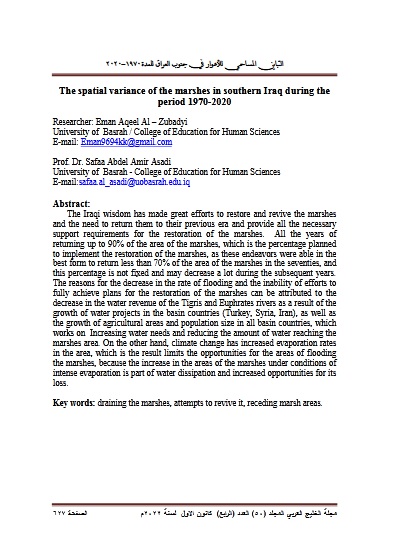The spatial variance of the marshes in southern Iraq during the period 1970-2020
Keywords:
draining the marshes, attempts to revive it, receding marsh areasAbstract
The Iraqi wisdom has made great efforts to restore and revive the marshes and the need to return them to their previous era and provide all the necessary support requirements for the restoration of the marshes. All the years of returning up to 90% of the area of the marshes, which is the percentage planned to implement the restoration of the marshes, as these endeavors were able in the best form to return less than 70% of the area of the marshes in the seventies, and this percentage is not fixed and may decrease a lot during the subsequent years. The reasons for the decrease in the rate of flooding and the inability of efforts to fully achieve plans for the restoration of the marshes can be attributed to the decrease in the water revenue of the Tigris and Euphrates rivers as a result of the growth of water projects in the basin countries (Turkey, Syria, Iran), as well as the growth of agricultural areas and population size in all basin countries, which works on Increasing water needs and reducing the amount of water reaching the marshes area. On the other hand, climate change has increased evaporation rates in the area, which is the result limits the opportunities for the areas of flooding the marshes, because the increase in the areas of the marshes under conditions of intense evaporation is part of water dissipation and increased opportunities for its loss.




